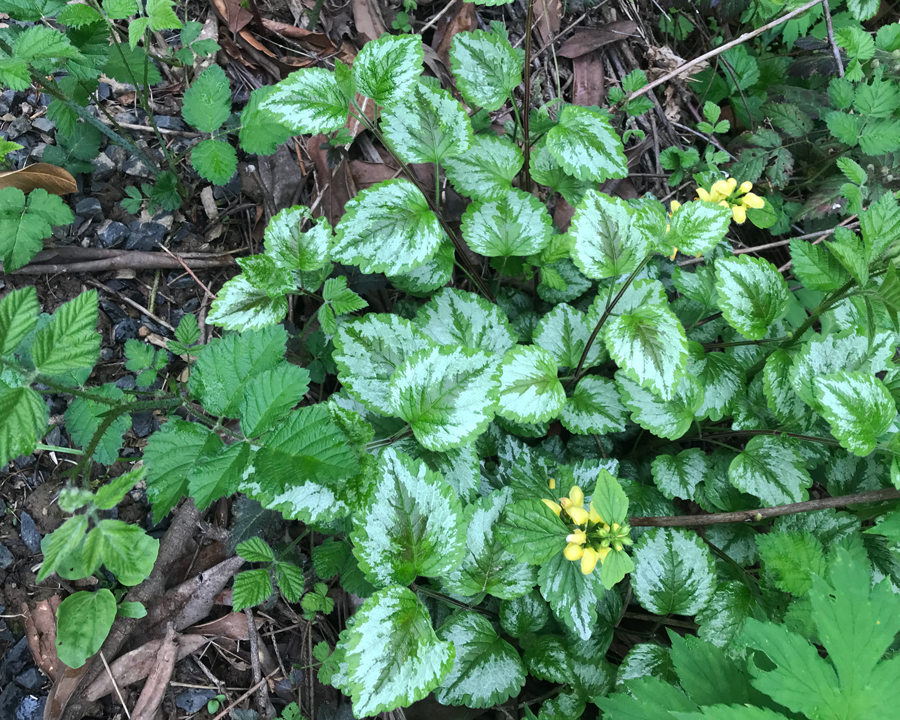Yellow Archangel Removal in Victoria, BC: Eco-Friendly and Long-Term Solutions
.
Need help with your yard? Get your free quote today!
Get a Free Quote!
Yellow Archangel Removal in Victoria, BC: Eco-Friendly and Long-Term Solutions
Yellow Archangel (Lamiastrum galeobdolon) may look like a charming groundcover with its silver-streaked leaves and bright yellow flowers, but it poses a significant threat to Victoria’s diverse ecosystems. Thanks to a temperate climate and mild winters, this plant readily escapes garden borders and thrives in local parks, forest edges, and natural areas. Below, we explore why Yellow Archangel is problematic, and how eco-friendly, long-term solutions can help residents and land managers in Victoria regain control.
1. Why Yellow Archangel Is a Concern in Victoria
1.1 Ecological Disruption
- Aggressive Growth
Yellow Archangel spreads through above-ground stolons, rooting at nodes along each stem. In a relatively short time, it can form thick mats that dominate the understory, displacing native groundcovers and wildflowers vital to local pollinators and other wildlife. - Threat to Sensitive Habitats
Garry Oak meadows, riparian zones, and coastal forests near Victoria are already under pressure from urban development and other invasive species. Yellow Archangel’s rapid spread puts additional strain on these delicate ecosystems.
1.2 Persistence
- Hardy and Adaptive
Suited to both shaded and partially sunlit areas, Yellow Archangel flourishes in the region’s moist, mild weather. - Regrowth from Fragments
Even small stem or root pieces can regrow if left behind or improperly disposed of, making repeated monitoring essential for long-term management.
2. Eco-Friendly Removal Methods
2.1 Manual Removal
Hand Pulling
- Best For: Small infestations or sensitive areas where herbicides must be avoided.
- Technique: Gently pull stems and roots from moist soil, ensuring you remove the entire stolon to prevent regrowth.
- Tip: Work in small sections, following the runners to their roots, and double-check for fragments.
Digging and Raking
- Best For: Moderately sized patches.
- Technique: Trim top growth to see the network of stems, then use a garden fork or spade to loosen soil around root clusters before lifting them out.
Both methods allow for a targeted approach that minimizes the disturbance to nearby native plants.
2.2 Mechanical Control: Sheet Mulching
Overview
Sheet mulching involves placing layers of cardboard or newspaper over cut Yellow Archangel, then topping it with a thick layer of mulch (e.g., wood chips or straw).Why It’s Eco-Friendly
- Avoids herbicide use.
- The mulch gradually decomposes, enriching the soil.
Challenges
- Must be maintained for several months, and any gaps in coverage could allow surviving stolons to emerge.
2.3 Targeted Herbicide Use (If Necessary)
While the goal is to limit chemical intervention, in large or deeply rooted infestations, targeted herbicides can be part of a responsible, integrated strategy:
Spot Treatments
- Apply herbicide directly to leaves or stems using a sponge or paintbrush, minimizing drift to non-target plants.
Local Regulations
- Always follow municipal and provincial guidelines in Victoria and the Capital Regional District (CRD).
Sustainability Tip
- Use herbicides as a last resort and always in combination with mechanical or manual removal for the most eco-friendly outcome.
3. Proper Disposal: Preventing Further Spread
Secure Bagging
- Place all removed plant material—stems, roots, and cuttings—into heavy-duty plastic bags.
Municipal Green Waste
- Confirm local CRD disposal protocols for invasive plant species. Some facilities may require invasive material to be labeled or kept separate.
Avoid Home Compost
- Most residential compost systems won’t reach temperatures high enough to kill invasive plant fragments.
4. Replanting with Native Species
Once Yellow Archangel is removed, replanting helps stabilize the soil and discourage reinfestation:
Groundcovers
- Kinnikinnick (Arctostaphylos uva-ursi): Well-suited to sunnier spots and poor soils.
- Woodland Strawberry (Fragaria vesca): Thrives in partial shade, offering edible fruit and pollinator benefits.
Ferns & Wildflowers
- In shadier areas, consider species like Sword Fern (Polystichum munitum) or shade-tolerant wildflowers that provide habitat value for insects and birds.
Mulching
- Add a layer of mulch to suppress any remnant stolons and support newly planted natives.
5. Long-Term Management & Monitoring
5.1 Scheduled Inspections
- Frequency
Inspect treated areas every few weeks during the growing season to catch any resurgent shoots. - Quick Response
Remove new sprouts immediately, reducing the chance of re-establishment.
5.2 Ongoing Maintenance
- Proper Watering & Fertilization
Maintain the health of newly planted natives so they can outcompete any lingering Yellow Archangel. - Integrated Pest Management (IPM)
Adopt a holistic approach to yard care—incorporating soil health, beneficial insects, and careful monitoring to reduce reliance on chemicals.
6. Local Resources for Assistance
Capital Regional District (CRD)
- Offers guidelines on invasive plant control and approved disposal methods.
Invasive Species Council of BC
- Provides detailed identification, removal techniques, and volunteer programs for community-based invasive plant control.
Community Stewardship Groups
- Organizations like the Habitat Acquisition Trust (HAT) and local Parks departments often host volunteer weed pulls and native planting events in Victoria’s parks and neighborhoods.
Conclusion
Yellow Archangel’s lush appearance masks its invasive potential. However, with patience, consistent monitoring, and eco-friendly techniques—ranging from manual removal and sheet mulching to carefully managed herbicide application—it’s possible to restore balance to your garden or local green space. By removing Yellow Archangel, properly disposing of plant material, and replanting with hardy native species, Victoria homeowners and land managers can protect the region’s rich biodiversity for future generations.
